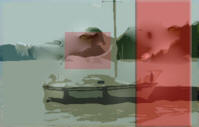|
Starting
1.
Turn off all electronics.
2.
Turn battery switch to All/Both.
3.
Run bilge blower for five minutes.
4. Be
sure gear shift is in neutral.
5.
Throttle 1/2 way.
6.
Push in fuel shut-off lever.
7.
Locate glow plug or pre-heater.
8.
Start engine.
9.
Ensure that water is discharging from the exhaust.
10.
Perform gear check with idle at 500 rpm.
Note:
There is a direct starter button on the engine to bypass the cockpit
controls if the key doesn't work.
Stopping
1.
Pull out fuel cutoff lever.
2.
Await oil pressure to drop and alarm to sound.
3.
Turn off switch (key).
4.
Push in fuel cutoff lever. |
Gauges
Ammeter
should read 12 - 14 volts.
Water
temperature should read 200 - 210 degrees.
Oil
pressure should be 40 - 80 lbs./sq. in.
RPM
Idle - 500
rpm.
Maximum
efficiency - 2000 rpm.
Charge
refrigeration at 1500 rpm.
Do not motor
and charge refrigeration unless you keep rpm below 1500. Otherwise,
you will burn up the refrigeration motor.
Daily
Maintenance
The oil,
water, and transmission fluid levels should be checked every day. |




![]()